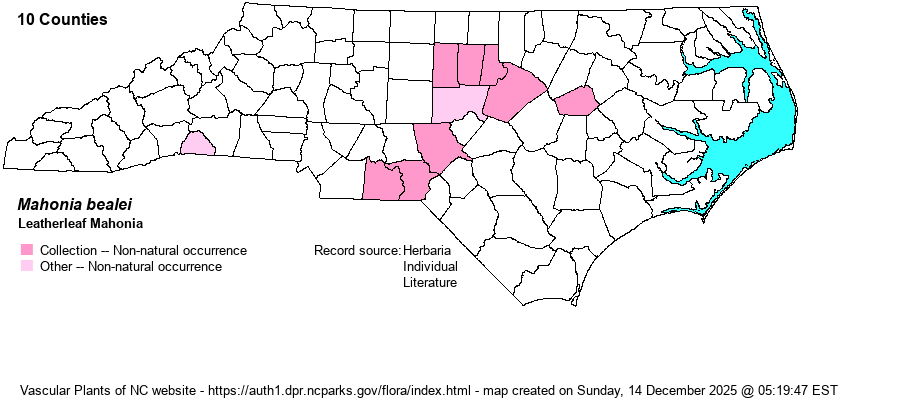| Author | (Fortune) Carriere | |
| Distribution | So far as is documented, lower Piedmont and upper Coastal Plain. However, there are likely many more counties where it has escaped and not been collected.
Native of China; in N.A. found from DE to KY and MO south to FL and LA.. | |
| Abundance | Rare. Plants usually occur in small numbers. | |
| Habitat | Moist to seasonally wet, disturbed woodlands near creeks. Though plants tend to occur within woodlands in shade, there do not seem to be cases in NC of this being a problem weed in natural forests. |
| Phenology | Flowering February-March, fruiting March-April. | |
| Identification | Mahonia bealei is easy to identify, due to its erect thick stem with horizontal evergreen, compound leaves 1-1.5 feet long and which are divided into 2-4 pairs of thick leaflets (plus a terminal one). Leaflets have several spine-tipped lobes and look quite like an evergreen holly (Ilex). Fruits are ellipsoid, pale gray-green when young and dark blue when ripe. | |
| Taxonomic Comments | Also treated as Berberis bealei.
| |
| Other Common Name(s) | Oregon Grape | |
| State Rank | SE | |
| Global Rank | GNR | |
| State Status | | |
| US Status | | |
| USACE-agcp | | |
| USACE-emp | | |

